David Pujol-Perich
Sparse-Dense Side-Tuner for efficient Video Temporal Grounding
Jul 10, 2025Abstract:Video Temporal Grounding (VTG) involves Moment Retrieval (MR) and Highlight Detection (HD) based on textual queries. For this, most methods rely solely on final-layer features of frozen large pre-trained backbones, limiting their adaptability to new domains. While full fine-tuning is often impractical, parameter-efficient fine-tuning -- and particularly side-tuning (ST) -- has emerged as an effective alternative. However, prior ST approaches this problem from a frame-level refinement perspective, overlooking the inherent sparse nature of MR. To address this, we propose the Sparse-Dense Side-Tuner (SDST), the first anchor-free ST architecture for VTG. We also introduce the Reference-based Deformable Self-Attention, a novel mechanism that enhances the context modeling of the deformable attention -- a key limitation of existing anchor-free methods. Additionally, we present the first effective integration of InternVideo2 backbone into an ST framework, showing its profound implications in performance. Overall, our method significantly improves existing ST methods, achieving highly competitive or SOTA results on QVHighlights, TACoS, and Charades-STA, while reducing up to a 73% the parameter count w.r.t. the existing SOTA methods. The code is publicly accessible at https://github.com/davidpujol/SDST.
SADA: Semantic adversarial unsupervised domain adaptation for Temporal Action Localization
Dec 20, 2023Abstract:Temporal Action Localization (TAL) is a complex task that poses relevant challenges, particularly when attempting to generalize on new -- unseen -- domains in real-world applications. These scenarios, despite realistic, are often neglected in the literature, exposing these solutions to important performance degradation. In this work, we tackle this issue by introducing, for the first time, an approach for Unsupervised Domain Adaptation (UDA) in sparse TAL, which we refer to as Semantic Adversarial unsupervised Domain Adaptation (SADA). Our contribution is threefold: (1) we pioneer the development of a domain adaptation model that operates on realistic sparse action detection benchmarks; (2) we tackle the limitations of global-distribution alignment techniques by introducing a novel adversarial loss that is sensitive to local class distributions, ensuring finer-grained adaptation; and (3) we present a novel experimental setup, based on EpicKitchens100, that evaluates multiple types of domain shifts in a comprehensive manner. Our experimental results indicate that SADA improves the adaptation across domains when compared to fully supervised state-of-the-art and alternative UDA methods, attaining a relative performance boost of up to 14%.
IGNNITION: Bridging the Gap Between Graph Neural Networks and Networking Systems
Sep 14, 2021
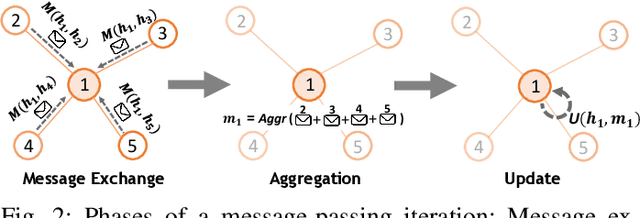
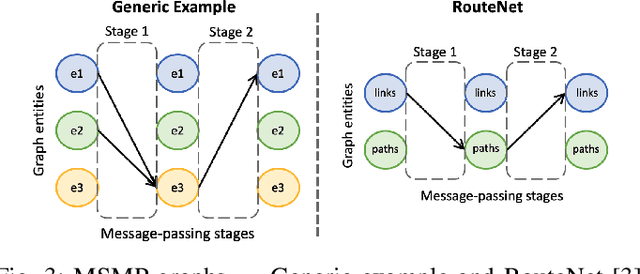
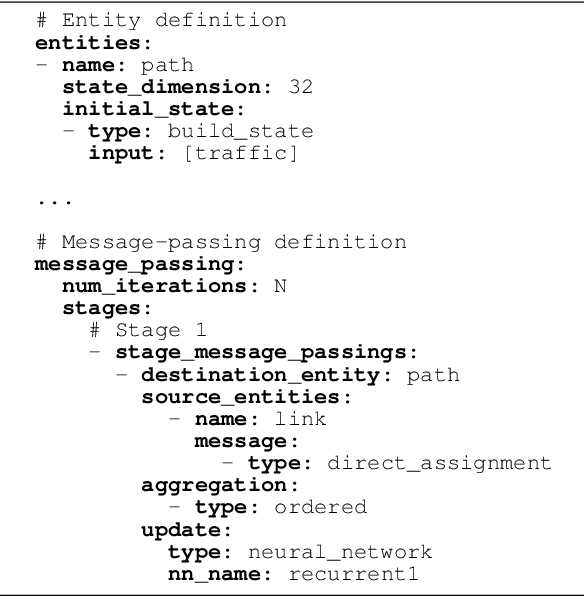
Abstract:Recent years have seen the vast potential of Graph Neural Networks (GNN) in many fields where data is structured as graphs (e.g., chemistry, recommender systems). In particular, GNNs are becoming increasingly popular in the field of networking, as graphs are intrinsically present at many levels (e.g., topology, routing). The main novelty of GNNs is their ability to generalize to other networks unseen during training, which is an essential feature for developing practical Machine Learning (ML) solutions for networking. However, implementing a functional GNN prototype is currently a cumbersome task that requires strong skills in neural network programming. This poses an important barrier to network engineers that often do not have the necessary ML expertise. In this article, we present IGNNITION, a novel open-source framework that enables fast prototyping of GNNs for networking systems. IGNNITION is based on an intuitive high-level abstraction that hides the complexity behind GNNs, while still offering great flexibility to build custom GNN architectures. To showcase the versatility and performance of this framework, we implement two state-of-the-art GNN models applied to different networking use cases. Our results show that the GNN models produced by IGNNITION are equivalent in terms of accuracy and performance to their native implementations in TensorFlow.
Unveiling the potential of Graph Neural Networks for robust Intrusion Detection
Jul 30, 2021



Abstract:The last few years have seen an increasing wave of attacks with serious economic and privacy damages, which evinces the need for accurate Network Intrusion Detection Systems (NIDS). Recent works propose the use of Machine Learning (ML) techniques for building such systems (e.g., decision trees, neural networks). However, existing ML-based NIDS are barely robust to common adversarial attacks, which limits their applicability to real networks. A fundamental problem of these solutions is that they treat and classify flows independently. In contrast, in this paper we argue the importance of focusing on the structural patterns of attacks, by capturing not only the individual flow features, but also the relations between different flows (e.g., the source/destination hosts they share). To this end, we use a graph representation that keeps flow records and their relationships, and propose a novel Graph Neural Network (GNN) model tailored to process and learn from such graph-structured information. In our evaluation, we first show that the proposed GNN model achieves state-of-the-art results in the well-known CIC-IDS2017 dataset. Moreover, we assess the robustness of our solution under two common adversarial attacks, that intentionally modify the packet size and inter-arrival times to avoid detection. The results show that our model is able to maintain the same level of accuracy as in previous experiments, while state-of-the-art ML techniques degrade up to 50% their accuracy (F1-score) under these attacks. This unprecedented level of robustness is mainly induced by the capability of our GNN model to learn flow patterns of attacks structured as graphs.
The Graph Neural Networking Challenge: A Worldwide Competition for Education in AI/ML for Networks
Jul 26, 2021

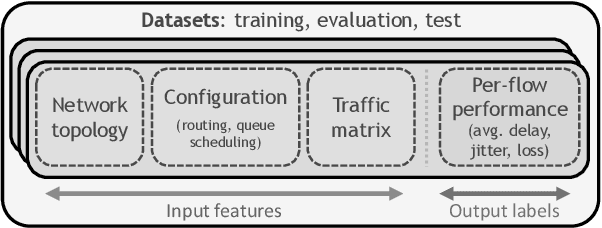
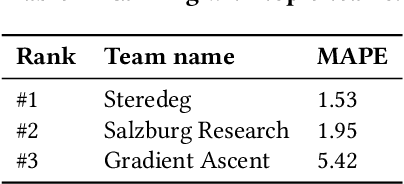
Abstract:During the last decade, Machine Learning (ML) has increasingly become a hot topic in the field of Computer Networks and is expected to be gradually adopted for a plethora of control, monitoring and management tasks in real-world deployments. This poses the need to count on new generations of students, researchers and practitioners with a solid background in ML applied to networks. During 2020, the International Telecommunication Union (ITU) has organized the "ITU AI/ML in 5G challenge'', an open global competition that has introduced to a broad audience some of the current main challenges in ML for networks. This large-scale initiative has gathered 23 different challenges proposed by network operators, equipment manufacturers and academia, and has attracted a total of 1300+ participants from 60+ countries. This paper narrates our experience organizing one of the proposed challenges: the "Graph Neural Networking Challenge 2020''. We describe the problem presented to participants, the tools and resources provided, some organization aspects and participation statistics, an outline of the top-3 awarded solutions, and a summary with some lessons learned during all this journey. As a result, this challenge leaves a curated set of educational resources openly available to anyone interested in the topic.
 Add to Chrome
Add to Chrome Add to Firefox
Add to Firefox Add to Edge
Add to Edge